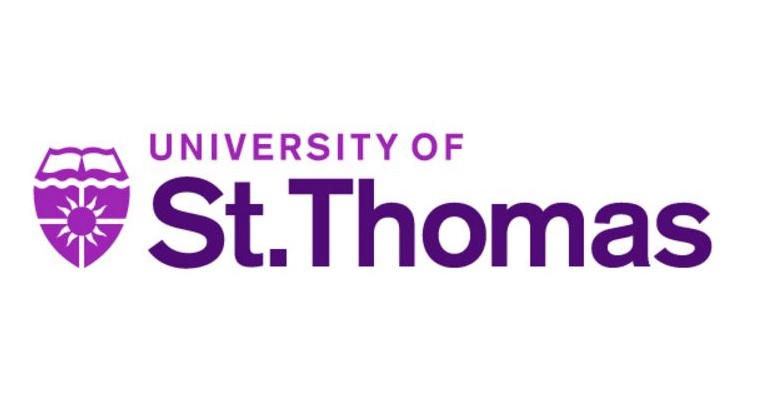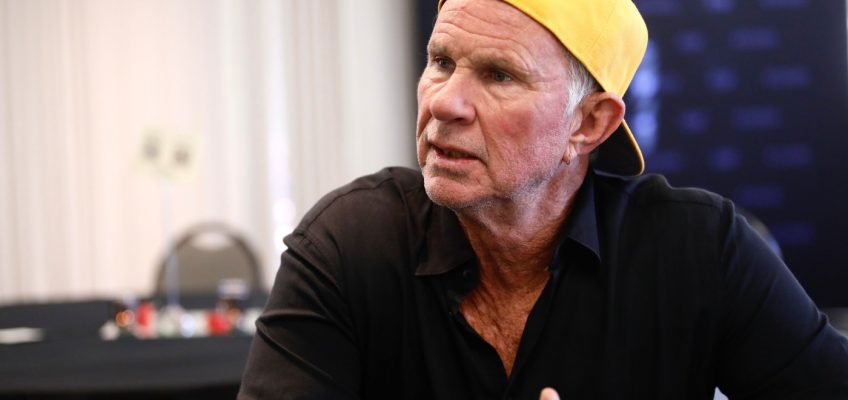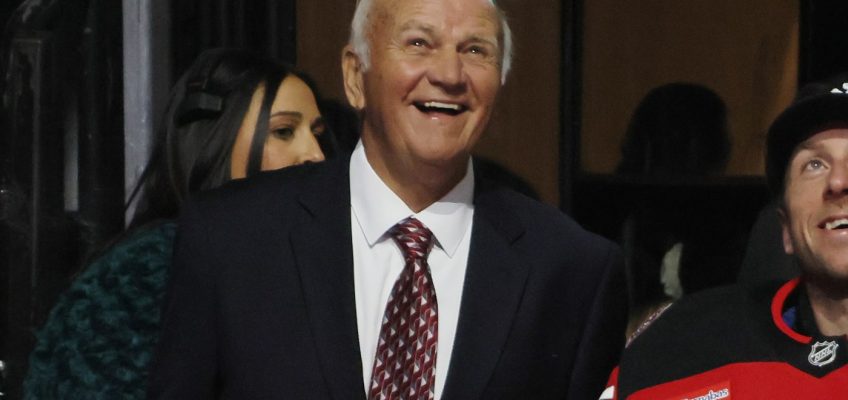There’s a growing sense of anticipation for University of St. Thomas men’s hockey fans, excitement that suffering a series sweep Sunday against future conference rival North Dakota dampened only mildly.
The 10th-ranked River Hawks broke a first-period tie and cruised to a 5-2 victory over the No. 19 Tommies on Sunday at Grand Casino Arena. St. Thomas, a current Central Collegiate Hockey Association member that will join UND in the stronger National Collegiate Hockey Conference next season, suffered a 6-2 loss to the same foe Friday night in Grand Forks, N.D.
Still, with the first game in their $175 million Lee and Penny Anderson Arena scheduled for October 24 against Providence, St. Thomas backers are happily anxious despite early-season setbacks against one of college hockey’s blue bloods. The River Hawks have won eight national championships and made 22 Frozen Four appearances.
“Four years into the journey of a lifetime, we’re ready for the next chapter … on a national stage, intoned a serious-voiced announcer during a pregame hype video played on the massive arena’s video boards.
Coach Rico Blasi currently wants nothing to do with a wider point of view. The Tommies’ lost weekend on the scoreboard was his main concern.
“I’m absolutely not looking at the big picture,” the Tommies’ fifth-year boss said after his 1-2 team surrendered two power-play goals in front of a half-full lower bowl. “We’re focused on today and getting better. This stings right now, and I want it to sting. There’s no moral victories.”
So thoughts of the pomp and circumstance surrounding the new building and the NCAA Division I program’s continued rise from the Division III level just four years ago aren’t creeping in?
“Not a chance,” said the stone-faced boss, whose club visits Air Force in Colorado Springs this weekend. “We’re in the development business, and it’s (the players’) job to get better. We can’t be thinking about two weeks down the road. That’s a long ways away.”
North Dakota (2-0) opened Sunday’s scoring in the seventh minute. Defenseman Jake Livanavage walked the puck down from center point and passed into the right circle. Cole Reschny ripped a one-time shot home past the blocker of goaltender Carsen Musser and into the net’s far side.
The Tommies’ Lucas Wahlin, a Woodbury native, scored his third goal of the season five minutes into the second period. The star wing shot from low on the left wing and with goaltender Gibson Homer on his knees on the opposite side of the slot. The Arizona State transfer (25 saves) landed there after denying a Lucas Van Vielt one-timer, a rip set up by a Wahlin cross-ice pass.
The River Hawks moved ahead, 2-1, seven minutes into the period when Abram Wiebe threw an off-balance shot at the net from high on the left sideboards. The hope-and-a-prayer attempt sailed through a mix of players, over Musser’s glove and inside the far post.
“Overall, he has been solid,” Blasi said of Musser, a Colorado College transfer who finished with 18 saves. “I think he’d probably want a couple back tonight.”
North Dakota went up, 3-1, during the third period’s fifth minute and on a power-play goal.
The man advantage was created when Alex Gaffney was assessed a kneeing penalty despite clearly hitting Reschny with his hip when the latter was attempting to turn up ice from behind his own net. Ellis Rickwood scored from the doorstep on the rebound of a sharp-angle Livanavage shot.
The Tommies cut their deficit to 3-2 two minutes later, Ryan O’Neill scoring on a redirection at the right post off Jake Braccini’s whip of a pass from the far wing. North Dakota, however, needed only 31 seconds to go up, 4-2. Rickwood, high in the right circle spotted a wide-open Zellers gliding down the opposite side of the slot. Zellers, a Maple Grove product, had ample time and space to fire home a wrist shot.
Livanavage closed the scoring for UND, which improved to 2-6 in its last eight games in the arena, where the NCHC postseason tournament is annually staged. The River Hawks replaced 10th-year coach Brad Berry earlier this year with longtime assistant Dane Jackson.
St. Thomas defenseman Chase Cheslock, while appropriately somber after the loss, said playing in an NHL rink was a thrill.
“It’s a privilege,” said the Rogers, Minn., native, whose team has played games at a community rink in Mendota Heights with a 1,000-fan capacity. “You don’t get to play in these buildings often, and you don’t know if you ever will again. You take it all in but when it’s game time, the rink and the puck are the same size.”
No looking forward. Not for at least another week.
Briefly
North Dakota defenseman and captain Bennett Zmolek, a Rochester, Minn., product and the son of former Gopher Doug Zmolek, is easing himself back into regular action after undergoing three hip surgeries in the past six years. Bennett Zmolek, a graduate student in athletic administration and coaching, transferred from Minnesota State Mankato in 2024 but suffered a season-ending injury during his first game last season. … North Dakota defenseman E.J. Emery is that program’s first black player since 1994 and a first-round NHL draft pick in 2024 by the New York Rangers. … St. Thomas assistant coach Cory Laylin, a Gophers player during the late 1980s and early 1990s, is a Tommies assistant coac,h and sons Luc and Casy play forward on the team, although the latter was scratched from Sunday’s lineup. … St. Thomas junior defenseman Mason Poolman is the third son of 31-year North Dakota athletic trainer Mark Poolman to play college hockey. His older brothers, Tucker and Colton, suited up for the Fighting Hawks.
Related Articles
Woodbury’s Quentin Cobb-Butler playing big at WR for St. Thomas
After St. Thomas-area home demolished without permit, concerns grow over new student housing
St. Thomas garners another victory in arena legal battle with neighbors
Here’s a look at the University of St. Thomas’ Lee and Penny Anderson Arena as opening nears
University of St. Thomas hosts ‘upskilling’ training for machinists




